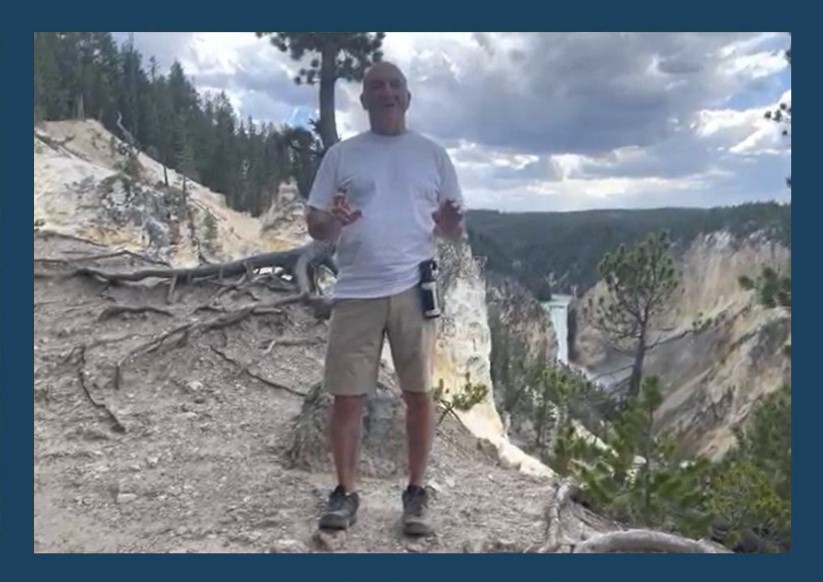

The Power of Curiosity
The force behind innovation, learning and change.
 Curiosity may be the most powerful force behind innovation, learning, and change. Therefore, I recently read the new Leonardo Da Vinci biography exceptionally written by Walter Isaacson to dive into understanding history’s most curious human. Isaacson used 500 pages to encapsulate Leonardo Da Vinci’s genius including a highly insightful summary at the end of his book. Although I dare not attempt to replicate his significant work, I would like to share with creatives and those who nurture creative environments in their organizations several lessons that I took from this book.
Curiosity may be the most powerful force behind innovation, learning, and change. Therefore, I recently read the new Leonardo Da Vinci biography exceptionally written by Walter Isaacson to dive into understanding history’s most curious human. Isaacson used 500 pages to encapsulate Leonardo Da Vinci’s genius including a highly insightful summary at the end of his book. Although I dare not attempt to replicate his significant work, I would like to share with creatives and those who nurture creative environments in their organizations several lessons that I took from this book.
Arguably history’s greatest artist, Da Vinci was also one of its greatest scientists. His genius crossed many scientific disciplines including Architecture, Anatomy, Geometry, Aeronautics, Hydraulics, Physiology, Optics, Mechanical, and Military Engineering, Robotics, Zoology, and Waterworks. However, his most lucrative talent was in theatrical production where he designed and planned lavish festivals in his home towns of Florence and Milan.

Curiosity may be the most powerful force behind innovation, learning, and change. Therefore, I recently read the new Leonardo Da Vinci biography exceptionally written by Walter Isaacson to dive into understanding history’s most curious human. Isaacson used 500 pages to encapsulate Leonardo Da Vinci’s genius including a highly insightful summary at the end of his book. Although I dare not attempt to replicate his significant work, I would like to share with creatives and those who nurture creative environments in their organizations several lessons that I took from this book
Arguably history’s greatest artist, Da Vinci was also one of its greatest scientists. His genius crossed many scientific disciplines including Architecture, Anatomy, Geometry, Aeronautics, Hydraulics, Physiology, Optics, Mechanical and Military Engineering, Robotics, Zoology, and Waterworks. However, his most lucrative talent was in theatrical production where he designed and planned lavish festivals in his home towns of Florence and Milan.
Leonardo Da Vinci: The Power of Observation
The force that triggers curiosity, creativity and uniqueness.
Da Vinci was never ashamed of his curiosity or uniqueness. He typically operated in a child-like fantasy world allowing his mind to drift wherever it wanted it to go. He was flamboyant, authentic, and unabashedly alternative. He was secure and self-assured and completely absorbed in his greater purpose. Not money, but safety, appreciation, and freedom to explore were his priorities in selecting his work. Da Vinci didn’t create for others, he created to satisfy his insatiable intellectual appetite.
 Not burdened by formal education, Da Vinci was free to follow his own intellectual path as an acute visual thinker rather than relying on mathematics or other technical disciplines. His breadth made him truly great as he integrated his ground-breaking scientific study into his artwork as well as his artwork into his scientific study. Yet, the power of observation may have been his greatest gift. It sparked his curiosity, which triggered his exploration, and evolved into his marvelous creativity. Da Vinci was a highly reflective man who wrote copious notes of his thoughts, feelings, frustrations, and the things that he was working on. These journal writings fueled his self-discovery and self-development.
Not burdened by formal education, Da Vinci was free to follow his own intellectual path as an acute visual thinker rather than relying on mathematics or other technical disciplines. His breadth made him truly great as he integrated his ground-breaking scientific study into his artwork as well as his artwork into his scientific study. Yet, the power of observation may have been his greatest gift. It sparked his curiosity, which triggered his exploration, and evolved into his marvelous creativity. Da Vinci was a highly reflective man who wrote copious notes of his thoughts, feelings, frustrations, and the things that he was working on. These journal writings fueled his self-discovery and self-development.
Da Vinci’s thirst for learning led him to community. He was a social man and was a frequent dinner host to engage with others. He had an open heart and was interested in learning and sharing with diverse sets of people and used their input to build upon his ideas and approaches. Da Vinci was a team player and some of his most enjoyable experiences and important works were collaborative efforts with others.
Da Vinci may also be the world’s greatest perfectionist. He chose to abandon lucrative or unfinished work if it did not meet his standards of perfection. He held several his greatest paintings, including the Mona Lisa, until his death to continually perfect them as he accumulated additional knowledge to improve them. He was one history’s early pathologist and dissected over thirty human bodies, made 240 drawings, and wrote over 13,000 pages of notes covering every bone, muscle group, and major organ in the body. Although this level of commitment helped him create Mona Lisa’s mysterious one-of-a-kind smile, he didn’t feel the importance to publish this ground-breaking work. While Da Vinci achieved great success, he often experienced failure and rejection. However, the expectations of others or public recognition did not drive him. His inspiration was his unrelenting curiosity.
He was one history’s early pathologist and dissected over thirty human bodies, made 240 drawings, and wrote over 13,000 pages of notes covering every bone, muscle group, and major organ in the body. Although this level of commitment helped him create Mona Lisa’s mysterious one-of-a-kind smile, he didn’t feel the importance to publish this ground-breaking work. While Da Vinci achieved great success, he often experienced failure and rejection. However, the expectations of others or public recognition did not drive him. His inspiration was his unrelenting curiosity.
While today’s ever-changing world becomes exceedingly chaotic and complex, we need relentlessly curious leaders and innovation-based organizations that support them to tackle our most challenging problems and promising opportunities. What can we learn from Leonardo Da Vinci? Here are several of my thoughts,
- People are the source of innovation. This is where we should focus our investment. Money doesn’t necessarily buy creativity. Creativity is not produced or controlled. It can’t be designed and engineered, and it requires much more than data, knowledge, or hard technical skills. Creativity simply “flows” and we must create environments that allows it to “flow” in our organizations
- People need safe places to learn, experiment, and grow. Failure should be embraced as an implied cost for innovation. Community is important as creativity does not blossom in isolation or unidimensional environments. Creativity requires openness, inclusion, and understanding. Eccentricity should be coached and channeled, but not excluded if it yields positive results.
- Creativity starts within the hearts and minds of individuals. It requires confidence, self-assuredness, courage, and authenticity. It needs people to understand themselves and their greater purpose. It requires people to develop skills to learn, work, and grow with each other. Innovation is needed everywhere. It is important for the future of technology companies in the Silicon Valley. It is also an essential for the future of smallholder farmers in Sub-Sahara Africa.

Leonardo Da Vinci taught us that curiosity is the basis for creativity and innovation. The more relentless our curiosity, the more likely we will be innovative and creative, and possibly one step closer to perfection.
Da Vinci was never ashamed of his curiosity or uniqueness. He typically operated in a child-like fantasy world allowing his mind to drift wherever it wanted it to go. He was flamboyant, authentic, and unabashedly alternative. He was secure and self-assured and completely absorbed in his greater purpose. Not money, but safety, appreciation, and freedom to explore were his priorities in selecting his work. Da Vinci didn’t create for others, he created to satisfy his insatiable intellectual appetite.
 Not burdened by formal education, Da Vinci was free to follow his own intellectual path as an acute visual thinker rather than relying on mathematics or other technical disciplines. His breadth made him truly great as he integrated his ground-breaking scientific study into his artwork as well as his artwork into his scientific study. Yet, the power of observation may have been his greatest gift. It sparked his curiosity, which triggered his exploration, and evolved into his marvelous creativity. Da Vinci was a highly reflective man who wrote copious notes of his thoughts, feelings, frustrations, and the things that he was working on. These journal writings fueled his self-discovery and self-development.
Not burdened by formal education, Da Vinci was free to follow his own intellectual path as an acute visual thinker rather than relying on mathematics or other technical disciplines. His breadth made him truly great as he integrated his ground-breaking scientific study into his artwork as well as his artwork into his scientific study. Yet, the power of observation may have been his greatest gift. It sparked his curiosity, which triggered his exploration, and evolved into his marvelous creativity. Da Vinci was a highly reflective man who wrote copious notes of his thoughts, feelings, frustrations, and the things that he was working on. These journal writings fueled his self-discovery and self-development.
Da Vinci’s thirst for learning led him to community. He was a social man and was a frequent dinner host to engage with others. He had an open heart and was interested in learning and sharing with diverse sets of people and used their input to build upon his ideas and approaches. Da Vinci was a team player and some of his most enjoyable experiences and important works were collaborative efforts with others.
Da Vinci may also be the world’s greatest perfectionist. He chose to abandon lucrative or unfinished work if it did not meet his standards of perfection. He held several his greatest paintings, including the Mona Lisa, until his death to continually perfect them as he accumulated additional knowledge to improve them. He was one history’s early pathologist and dissected over thirty human bodies, made 240 drawings, and wrote over 13,000 pages of notes covering every bone, muscle group, and major organ in the body. Although this level of commitment helped him create Mona Lisa’s mysterious one-of-a-kind smile, he didn’t feel the importance to publish this ground-breaking work. While Da Vinci achieved great success, he often experienced failure and rejection. However, the expectations of others or public recognition did not drive him. His inspiration was his unrelenting curiosity.
He was one history’s early pathologist and dissected over thirty human bodies, made 240 drawings, and wrote over 13,000 pages of notes covering every bone, muscle group, and major organ in the body. Although this level of commitment helped him create Mona Lisa’s mysterious one-of-a-kind smile, he didn’t feel the importance to publish this ground-breaking work. While Da Vinci achieved great success, he often experienced failure and rejection. However, the expectations of others or public recognition did not drive him. His inspiration was his unrelenting curiosity.
While today’s ever-changing world becomes exceedingly chaotic and complex, we need relentlessly curious leaders and innovation-based organizations that support them to tackle our most challenging problems and promising opportunities. What can we learn from Leonardo Da Vinci? Here are several of my thoughts,
- People are the source of innovation. This is where we should focus our investment. Money doesn’t necessarily buy creativity. Creativity is not produced or controlled. It can’t be designed and engineered, and it requires much more than data, knowledge, or hard technical skills. Creativity simply “flows” and we must create environments that allows it to “flow” in our organizations
- People need safe places to learn, experiment, and grow. Failure should be embraced as an implied cost for innovation. Community is important as creativity does not blossom in isolation or unidimensional environments. Creativity requires openness, inclusion, and understanding. Eccentricity should be coached and channeled, but not excluded if it yields positive results.
- Creativity starts within the hearts and minds of individuals. It requires confidence, self-assuredness, courage, and authenticity. It needs people to understand themselves and their greater purpose. It requires people to develop skills to learn, work, and grow with each other. Innovation is needed everywhere. It is important for the future of technology companies in the Silicon Valley. It is also an essential for the future of smallholder farmers in Sub-Sahara Africa.

Leonardo Da Vinci taught us that curiosity is the basis for creativity and innovation. The more relentless our curiosity, the more likely we will be innovative and creative, and possibly one step closer to perfection.
Contact us
If we want to build innovative organizations, we should start by creating curious organizations which nurture and enhance the curiosity of people.
Are you curious about how OrgForce Consulting can help you harness the Power of Curiosity? Contact David Miller at (301) 633-1684 or dmiller@org-force.com to learn more.
Recent Posts


My Leadership Journey in Yellowstone



